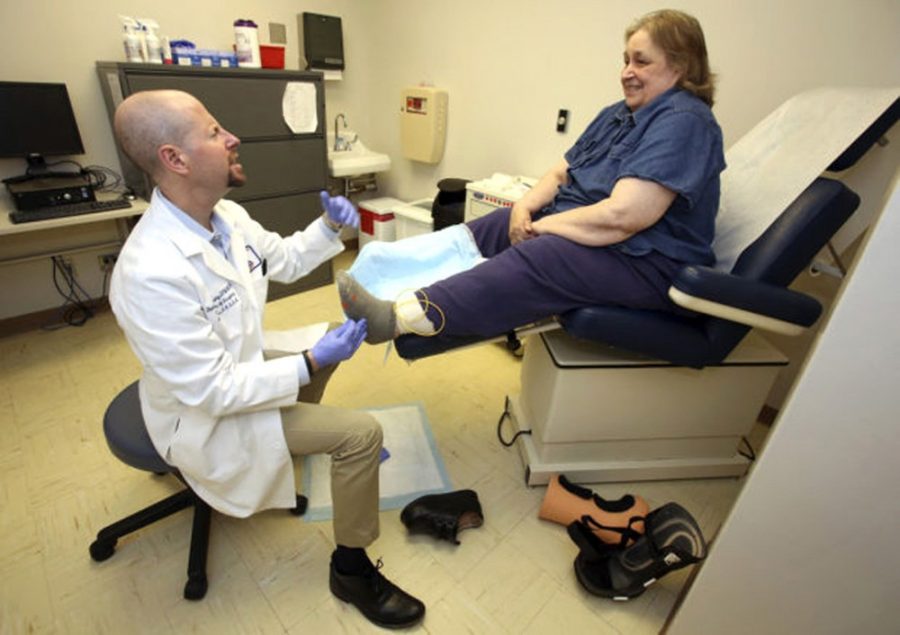The Southern Arizona Limb Salvage Alliance, a collaboration between researchers and clinicians, is developing technology to help diabetic patients and their doctors better monitor potentially dangerous issues before they manifest. Some of the products being developed are “Smart Socks” and an injectable sensor, both of which are designed to communicate with smart phones.
Smart Socks were developed by SALSA and its engineering component, the interdisciplinary Consortium on Advanced Motion Performance, for the prevention of foot ulcers or skin breakdown on the feet.
“Amongst those with diabetes, the most common reason that one will be admitted to [the] hospital is not for a heart attack or a stroke or high blood sugar, but for their foot,” said Dr. David G. Armstrong, director of SALSA and a professor of surgery at the UA.
People with diabetes are prone to a symptom called neuropathy, which is nerve damage that results in a loss of feeling among patients.
Foot ulcers can be dangerous for those with diabetes because they might not be noticed early. If allowed to worsen, the only option left may be amputation of the foot due to infection or gangrene.
According to Armstrong, every 20 seconds, a limb is lost due to diabetes, but Smart Socks are designed to prevent this by alerting the patient through an app on their smart phone before ulcers are allowed to develop.
“If someone’s about to get a wound, you’ll see that potentially damaging inflammation before it actually causes damage,” Armstrong said. “Like the poet Thomas Campbell said, it’s a coming event that actually casts its shadows before. You can look for asymmetry [in temperature] on one foot, one body part, compared to another part of the body.”
Smart products have been made possible through the work of engineers such as Bijan Najafi, an associate professor of surgery at the UA. Najafi specializes in developing devices to assist diabetic patients.
“Doctors like Dr. Armstrong tell us about a problem and engineers try to find cost-effective solutions,” Najafi said. “Together … we can make a difference to some of the devastating problems of society.”
While SALSA’s main goal is the prevention of diabetic foot wounds, it has other goals as well.
“I think, around the world, SALSA is probably best known in the world for preventing amputations in diabetes, so-called limb salvage, but we also have a broad interest in how people move through the world,” Armstrong said. “That doesn’t just involve people with diabetes. It’s not just people who are older or that had a stroke or it’s not just an athlete. What we are working toward is helping to redefine how to measure how we interact with our environment.”
Najafi has been instrumental in developing technologies to detect postural instability, which can be a sign that a patient is at risk of having dangerous falls. Once patients have been identified as potential fall risks, they can be prescribed a series of “smart exercises” that have been shown to enhance balance.
“We have direct interaction with people who understand the problem, recognize the problem, and sometimes the solution is very, very easy,” Najafi said. “The area that we are focusing on is benefiting from these apps and technology and helping patients to take care of their own health and helping doctors to provide personalized care cost-effectively without necessarily spending more time with patients.”
_______________
Follow Connie Tran on Twitter.









